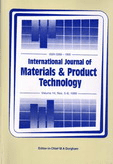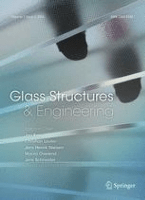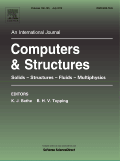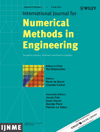
STRUCTURAL AND MULTIDISCIPLINARY OPTIMIZATION
Scope & Guideline
Driving Excellence in Computational Design and Control
Introduction
Aims and Scopes
- Topology Optimization:
A core area of focus, topology optimization involves optimizing material layout within a given design space, subject to performance constraints. This includes applications in various fields such as aerospace, civil, and mechanical engineering. - Multidisciplinary Design Optimization (MDO):
The journal emphasizes the integration of multiple disciplines in the design process, facilitating collaboration among different engineering domains to achieve optimal solutions that consider interactions between various physical phenomena. - Robust and Reliability-Based Optimization:
Research in this area targets the development of optimization techniques that account for uncertainties in design parameters and loading conditions, ensuring that structures perform reliably under real-world conditions. - Application of Machine Learning and AI in Optimization:
The use of machine learning and artificial intelligence techniques to enhance optimization processes and surrogate modeling is increasingly prevalent, allowing for more efficient and effective design solutions. - Additive Manufacturing and Advanced Manufacturing Techniques:
With the rise of additive manufacturing, the journal explores optimization strategies specifically tailored for 3D printing processes, focusing on design for manufacturability and performance. - Sustainability and Environmental Considerations:
Research that addresses the optimization of structures with respect to environmental impact, material efficiency, and life-cycle considerations is gaining traction, reflecting a broader commitment to sustainable engineering practices.
Trending and Emerging
- Data-Driven Optimization Techniques:
There is a growing trend towards the use of data-driven approaches, including machine learning and AI, to enhance optimization processes. This includes the development of predictive models and advanced algorithms that improve design efficiency. - Integration of Digital Twins and Smart Technologies:
The concept of digital twins is increasingly being integrated into optimization processes, allowing for real-time monitoring and adjustments based on performance data, which enhances the adaptability and efficiency of designs. - Sustainability-Driven Design Optimization:
Research focused on sustainable design practices is gaining momentum, with optimization techniques aimed at reducing environmental impact and promoting the use of eco-friendly materials and processes. - Advanced Topology Optimization Methods:
Emerging methodologies in topology optimization, including multi-material and adaptive techniques, are becoming more prevalent, reflecting the need for innovative solutions in complex structural designs. - Multiscale and Multifidelity Optimization:
There is an increasing focus on multiscale optimization techniques that consider interactions across different scales and fidelity levels, allowing for more comprehensive analyses and design strategies.
Declining or Waning
- Traditional Structural Optimization Techniques:
Conventional methods such as linear programming and basic finite element analysis techniques appear less frequently as researchers move towards more complex and integrated approaches that incorporate non-linearities and dynamic conditions. - Single-Disciplinary Focus:
There is a noticeable decline in papers focusing solely on a single discipline, with a stronger emphasis now placed on multidisciplinary approaches that integrate various engineering fields. - Static Analysis Optimization:
Research focused exclusively on static analysis optimization is waning, as dynamic and time-dependent analyses become more critical in the context of real-world applications. - Basic Surrogate Modeling Techniques:
While surrogate modeling remains important, the journal has seen a reduction in the publication of basic methods, with a shift towards more sophisticated approaches that combine multiple techniques and leverage machine learning.
Similar Journals

Multiscale and Multidisciplinary Modeling Experiments and Design
Exploring the frontiers of modeling across multiple scales.Multiscale and Multidisciplinary Modeling Experiments and Design is a dynamic journal published by SPRINGERNATURE, dedicated to advancing the fields of applied mathematics, materials science, and mechanics of materials. With an ISSN of 2520-8160 and an E-ISSN of 2520-8179, this journal provides a platform for innovative research and multidisciplinary approaches that address complex modeling and experimental challenges from 2018 to 2024. Ranked in the Q3 quartile across its categories and holding respectable positions within Scopus rankings, it serves as a vital resource for researchers and professionals seeking to explore emerging techniques and solutions in their fields. Despite its recent inception, Multiscale and Multidisciplinary Modeling Experiments and Design fosters a collaborative environment for knowledge exchange, making it essential for anyone at the forefront of scientific discovery. Open access availability ensures that the groundbreaking research published within is accessible to a broad audience, promoting global collaboration and innovations.

INTERNATIONAL JOURNAL OF MATERIALS & PRODUCT TECHNOLOGY
Catalyzing Insights for Industrial Excellence.International Journal of Materials & Product Technology, published by InderScience Enterprises Ltd, is a pivotal platform for scholarly work in the fields of industrial and manufacturing engineering, mechanical engineering, mechanisms of materials, and safety, risk, reliability, and quality. With a rich history spanning from 1986 to 2024, this journal addresses critical advancements and challenges in materials technology, catering to a diverse audience including researchers, industry professionals, and students striving for innovation. Although currently not an open-access journal, it serves as a crucial resource for high-quality, peer-reviewed research, contributing significantly to its ranked quartile positioning in key engineering categories as of 2023. Positioned in the United Kingdom, the journal fosters global discourse and provides essential insights that spur academic debate and practical applications in these rapidly evolving fields. Explore this journal to stay updated with actionable research that shapes the future of materials and product technology.

Glass Structures & Engineering
Pioneering Research in Glass Structures and Design.Glass Structures & Engineering, published by SPRINGER INT PUBL AG, stands as a significant platform in the field of architectural and structural engineering, with a strong focus on advancements and innovative applications of glass in construction. With its ISSN 2363-5142 and E-ISSN 2363-5150, this prestigious journal holds a commendable position, evidenced by its Q1 classification in Architecture and Q2 ranking in both Building and Construction and Civil and Structural Engineering as of 2023. Since its inception in 2016, Glass Structures & Engineering has aimed to disseminate cutting-edge research findings, theoretical approaches, and case studies that explore the multifaceted uses of glass in modern infrastructure. Researchers, professionals, and students alike will find this journal an invaluable resource for the latest trends and methodologies in the evolving landscape of architectural design and structural integrity. Although it does not offer Open Access options, the journal remains an indispensable source for quality scholarly content in Switzerland and beyond.

Transactions of FAMENA
Unveiling Breakthroughs in Material MechanicsTransactions of FAMENA is a prestigious academic journal dedicated to the field of mechanics of materials, published by the University of Zagreb Faculty of Mechanical Engineering and Naval Architecture. With its ISSN and E-ISSN of 1333-1124, this journal serves as a vital platform for researchers, professionals, and students alike, promoting the dissemination of innovative research and advancements in material mechanics. Boasting an impact factor that places it in the Q3 category for Mechanics of Materials in 2023, the journal currently ranks at 245 out of 398 in the Scopus database, highlighting its contribution to the academic community and its growing influence within the field. Since its inception in 2002, Transactions of FAMENA has aimed to bridge theoretical and practical aspects of mechanics, providing an invaluable resource for those engaged in engineering and material sciences. Although it operates under a traditional access model, the insights and findings presented in its pages remain crucial for advancing knowledge and fostering collaboration amongst scholars worldwide.

COMPUTERS & STRUCTURES
Shaping Tomorrow's Engineering with Cutting-Edge ResearchCOMPUTERS & STRUCTURES is a leading interdisciplinary journal published by Pergamon-Elsevier Science Ltd, focusing on the application of computer methods in the fields of civil and structural engineering, mechanical engineering, materials science, and modeling and simulation. With a prestigious history dating back to its inception in 1971, this journal is committed to advancing the knowledge and methodologies that integrate computational techniques with structural analysis and design. Recognized in 2023 with a Q1 ranking across several categories, including Civil and Structural Engineering and Computer Science Applications, COMPUTERS & STRUCTURES emphasizes the importance of innovative research that pushes the boundaries of traditional engineering practices. Although the journal does not currently offer open access, it remains an invaluable resource for researchers, professionals, and students seeking to disseminate and discuss groundbreaking findings that are shaping the future of engineering and materials science. The rigorous peer-review process ensures the publication of high-quality articles that contribute to the global discourse in these critical fields.

ENGINEERING OPTIMIZATION
Driving Progress in Engineering and Applied SciencesENGINEERING OPTIMIZATION is a premier academic journal published by Taylor & Francis Ltd that has been at the forefront of the fields of Applied Mathematics, Computer Science Applications, Control and Optimization, Industrial and Manufacturing Engineering, and Management Science and Operations Research since its inception in 1974. With an impressive convergence period extending through 2024 and categorized in the Q2 quartile across various relevant disciplines, this journal is well-regarded for its rigorous peer-reviewed articles that address the latest advancements in optimization methodologies and their applications across industries. With current Scopus rankings placing it in the top percentiles for Applied Mathematics and Control and Optimization, ENGINEERING OPTIMIZATION serves as a vital resource for researchers, professionals, and students alike, dedicated to pushing the boundaries of knowledge and innovation in engineering and related fields. This journal does not offer Open Access; however, it remains accessible through institutional subscriptions and university libraries.

Advanced Steel Construction
Advancing the Future of Steel EngineeringAdvanced Steel Construction is a prominent journal published by the Hong Kong Institute of Steel Construction, dedicated to the field of structural engineering and material sciences with a specific focus on steel construction techniques and advancements. Since its inception in 2005, the journal has established itself as a valuable resource for researchers, professionals, and students alike, offering insights into the latest developments and innovative practices within the realms of building construction, civil engineering, and materials mechanics. With its recognition as a Q2 journal across multiple engineering categories, including Building and Construction, Civil and Structural Engineering, Mechanical Engineering, and Mechanics of Materials, it ranks competitively in Scopus rankings, highlighting its significance in academic discourse. The journal is based in China, at the Hong Kong Polytechnic University, and provides an essential platform for sharing groundbreaking research and fostering collaboration within the engineering community.

Journal of Computational Design and Engineering
Advancing the Frontier of Computational InnovationThe Journal of Computational Design and Engineering, published by Oxford University Press, is a premier open-access journal dedicated to advancing the field of computational science, technology, and engineering. With an E-ISSN of 2288-5048 and having transitioned to open access in 2015, this journal fosters a wide-reaching dissemination of high-quality research and innovative methodologies pertinent to computational mathematics, mechanics, modeling, and simulation. Notably recognized within the academic community, the journal boasts impressive rankings, including Q1 in Computational Mechanics and Computer Graphics, underscoring its significance in these fields. With a broad scope that appeals to researchers, professionals, and students alike, the Journal of Computational Design and Engineering plays a vital role in stimulating discussions on the intersection of computation and design, providing a platform for the latest advancements that shape engineering practices globally. As we look forward to its continued publication until 2024, the journal stands as a crucial resource for those aiming to push the boundaries of knowledge in computational engineering disciplines.

OPTIMIZATION AND ENGINEERING
Driving Excellence in Optimization Across DisciplinesOPTIMIZATION AND ENGINEERING, published by SPRINGER, is a leading academic journal that has been at the forefront of cutting-edge research since its inception in 2005. Operating from the Netherlands, this journal serves as a key platform for disseminating innovative findings across multiple disciplines, including Aerospace Engineering, Civil and Structural Engineering, Control and Optimization, Electrical and Electronic Engineering, Mechanical Engineering, and Software. Notably, it has achieved a commendable Q2 ranking across various fields as of 2023, illustrating its growing influence and impact in the scientific community. The journal ranks impressively in Scopus, with control and optimization articles placed in the 79th percentile. The articles published cover a broad spectrum of optimization theories and their applications, appealing not only to seasoned researchers and professionals but also to emerging talents in the field. While it does not offer open access options, the availability through reputable institutions ensures that vital insights reach a wide audience. This makes OPTIMIZATION AND ENGINEERING an indispensable resource for anyone interested in the latest advancements and methodologies in optimization and engineering.

INTERNATIONAL JOURNAL FOR NUMERICAL METHODS IN ENGINEERING
Leading the way in applied mathematics and engineering research.INTERNATIONAL JOURNAL FOR NUMERICAL METHODS IN ENGINEERING, published by WILEY, stands at the forefront of research in the fields of applied mathematics, engineering, and numerical analysis, as evidenced by its prestigious Q1 category rankings across these disciplines for the year 2023. With a long-standing legacy since 1969 and an impressive trajectory projected through 2024, this journal is dedicated to advancing the methodologies and applications of numerical techniques in engineering contexts. Researchers and professionals can access cutting-edge findings that contribute significantly to the optimization and innovation of engineering practices. Although it operates under a subscription model, the journal's impact factor and high citation rates underscore its vital role in influencing contemporary engineering research and education. Its rigorous selection process ensures high-quality, peer-reviewed articles that reflect the latest advancements and challenges in the field, making it an indispensable resource for academics, industry experts, and students alike.